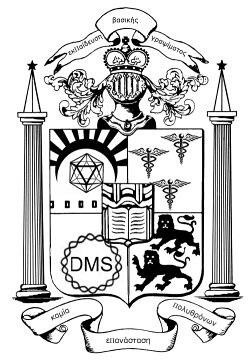One area of research that I've thought about getting into is non-canonical RNA, that is, RNA which is not tRNA, nor rRNA, nor mRNA. Recently, we've seen big developments in RNA interference (RNAi) where you add RNA to a cell to get it to shut down production of the complimentary gene (Footnote 1). That was fairly interesting, then I stumbled onto microRNA (or miRNA), which are small RNA produced naturally by cells which fulfill various tasks. Most of them are unknown, but one is known to be involved in fly eye development. On my interviews here, I talked to someone working on long non-translated RNA, and also varients to the old standbys. For instance, there are multiple different versions of each of the tRNAs in humans -> what do they do, why do they exist?
Anyway, I had an interest in RNA pathology, that is, finding RNAs that cause or are involved in disease. People laughed. They said RNA was either too fundamental (tRNA, rRNA) or too low copy (miRNA, other non-mRNAs) to have enough effect to be seen on a human scale. Well. Check this out. In summary, there is a cluster of microRNAs (mir 17-92)that, in combination with other oncogenes (namely c-myc) cause tumours to grow faster (Footnote 2). Very exciting. However, it doesn't seem that they know how this newly relevant miRNA oncogene does its thing. Maybe someone (hint-hint) should investigate.
Footnote 1: A short explanation of RNAi with most of the detail stripped out. DNA exists in a double stranded, antiparallel condition, like so:
W: Start->AGTCGTACC->End
C: End<-TCAGCATGG<-Start
We arbitrarily label the strands W and C so that we can keep them straight. Say that W codes for a complete gene, the sequence of which is: AGTCGTAC. When the gene is activated, an enzyme comes along and transcribes the gene, producing a transcript. The transcript is made out of RNA, which uses "U" instead of "T," so it would be:
Start->AGUCGUACC->End
This piece of RNA is called messenger RNA or mRNA, it completes its function by meeting up with the ribosome, which translates the RNA into protein, according to the genetic code. This particular gene would produce a protein whose sequence is Serine-Alanine-Threonine. This has all been known since the mid sixties, major snooze factor.
Here's RNAi -> is you introduce RNA that is complimentary to the mRNA, the gene is shut down. What does this mean?
The mRNA is: Start->AGUCGUACC->End
The complimentary RNA would be: Start->GGUACGACU->End
Wait, that doesn't pair at all! Except that, it does because the pairing is anti-parallel, like so:
The mRNA is: Start->AGUCGUACC->End
The complimentary RNA would be: End<-UCAGCAUGG<-Start
Note that the complimentary RNA bears an eerie similarity to the C strand of the gene, such that if you expressed the C strand, you would produce that complimentary RNA.
So, you have the mRNA, and complimentary RNA. What happens next? They base pair, of course. The product is double stranded RNA (dsRNA). dsRNA is never encountered in multicellular organisms, except for in viruses. Therefore, whenever your cells see dsRNA in them, they interpret it as viral RNA. They then produce enzymes that destroy the mRNA of the gene, and may completely shut it down gene. This is called interference (hence RNAi). In plants, once a gene is shut down, it never comes back. In humans, the gene is only shut down as long as you keep adding the complementary RNA to the cell, and the amount of interference is proportional to the amount of complementary RNA you add. This is great for experimenters, in that you can see what happens if you have a range of expression of a gene, as opposed to the simple on/off allowed by genetic engineering. It is somewhat bad for patients, because if you are shutting down a harmful gene by giving the patient complementary RNA, the effect wears off quickly, and you have to give them a lot of RNA to see an effect (people are trying this as we speak, btw).
Footnote 2: He L, Thomson JM, Hemann MT, Hernando-Monge E, Mu D, Goodson S, Powers S, Cordon-Cardo C, Lowe SW, Hannon GJ, Hammond SM. A microRNA polycistron as a potential human oncogene. Nature. 2005 Jun 9;435(7043):828-33.
PMID = 15944707
I applied to CSHL for grad school, didn't even get called for an interview. I know who Hammond and Hannon, and I wanted to work for them, and if I were... sigh.
Update:
I read the paper. Not bad. I mean, there are holes you could drive a truck through, but I'm still hugely excited. They want to rename their gene oncomiR-1 - that's oncogenic micro RNA 1. Woo. It's like Ras in 1982.
Subscribe to:
Post Comments (Atom)

No comments:
Post a Comment